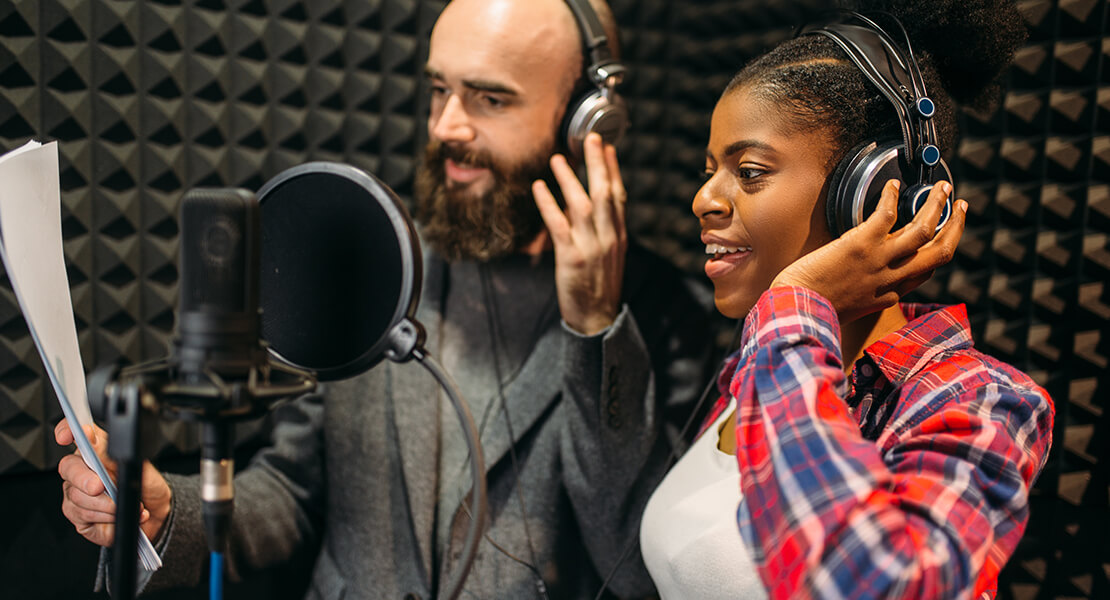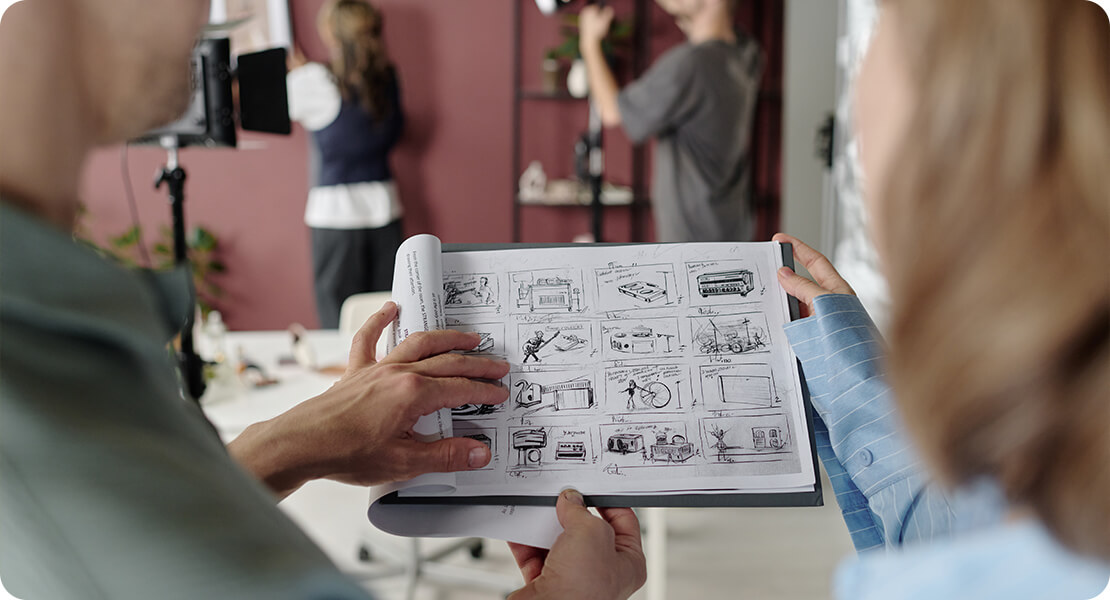
If animation is the body of a film or series, then scriptwriting is undoubtedly the backbone. It’s the blueprint, the first spark, the roadmap that guides everything from character design to voice acting, timing, and tone. And yet, it’s often underestimated—mistaken as something that just needs to “get the dialogue down.”
Let’s set the record straight. A great script isn’t just about what characters say. It’s about what they do, feel, and mean. It shapes the world they live in and determines how an audience will connect with them. Whether you’re making a short film, a TV series, or a commercial, the script is where the real storytelling begins.
In animation, where every frame is carefully crafted, the script carries even more weight. Unlike live-action, where spontaneity or actor improvisation might lead a scene in a new direction, animation demands precision. Every emotion, every beat, every shift in tone must be mapped out in the writing long before the first frame is drawn. It’s not just about setting the scene—it’s about setting intention.
Strong scriptwriting ensures the story flows, the characters breathe, and the visuals have purpose. It gives animators and directors something solid to build on—a shared vision that turns an idea into something that truly moves people.Top of FormBottom of Form
It All Starts with the Script
Before a single frame is animated, a story must be told. But animation doesn’t just require a good story—it demands a tight, visual, emotionally clear one. Animation is expensive and time-consuming, so every scene, every line, every beat in the script needs to earn its place.

In animation, the script sets the tone for everything: pacing, visual gags, transitions, mood, even camera angles. It informs how characters are blocked in a scene, where the humour sits, when the emotion peaks. If the script doesn’t land, no amount of beautiful animation will save it.
That’s why the writing phase is often the longest and most collaborative. It’s where story problems are spotted early, characters are given purpose, and sequences are tested on paper before a single asset is built. It’s not just about efficiency—it’s about clarity. Because once production kicks off, changes become costly and complex.
A good animation script is more than just a technical document—it’s the heartbeat of the whole production. It needs to balance character arcs, visual spectacle, emotional truth, and often humour, all within a strict runtime. And let’s not forget the audience. Animation often skews younger, but that doesn’t mean writing down to anyone. The best scripts respect the intelligence of their audience while remaining entertaining, fresh, and grounded.
So, we start here—with clear intent. What’s the message? What’s the emotional core? Who is this story really about? Once that’s defined, everything else can fall into place. The characters come to life, the world begins to build itself, and the path from script to screen becomes a journey worth taking.
Writing for the Visual Medium
Animation is a visual art, so a script for animation isn’t the same as one for live action. You’re not just writing dialogue—you’re directing with words. You’re describing action in a way that triggers imagination, sets pace, and leaves room for visual expression.
Instead of lines like “She looks surprised,” you might write, “Her eyes widen, pupils shrinking as she clutches her chest with both hands.” You write what needs to be seen and felt, not just what needs to be said.

And you’ve got to leave space for the animator’s interpretation. The best scripts suggest, guide, and inspire—without micromanaging every frame. It’s a collaboration, not a dictatorship.
In live-action, much is left to the actor’s expression and the director’s vision on set. But in animation, if it’s not in the script or boards, it doesn’t exist. That’s why writing for animation is often far more descriptive and intentional. You’re painting with words, laying the groundwork for visuals that haven’t been created yet.
You also need to write rhythmically. Pacing matters in a big way. A long pause, a rapid-fire exchange, a beat before a punchline—these moments live or die by how they’re written. Use line breaks, ellipses, and dashes to mimic breath and timing. Vary sentence length to mirror the energy of a scene—short bursts for tension, longer lines for reflection or calm. Read your script aloud and listen to the tempo. Does it flow like a conversation, or stumble like a list? And remember, in animation, you can do anything. So, your job as a writer isn’t to limit the world but to ignite it with possibility. What can we show instead of tell? How can the environment support the emotion? Can a character’s internal struggle be shown in how they move, how their shadow falls, or how the world reacts around them? Writing rhythmically means thinking like a conductor—guiding not just what happens, but how it feels and when it hits.
It’s this layered, visual storytelling that sets animated scripts apart. Done well, they read like a movie playing out in your head—full of personality, clarity, and charm, ready to be brought to life one frame at a time.
Crafting Comedy and Timing
Comedy in animation lives and dies by timing. A perfectly delivered line can fall flat if the visual setup isn’t right. That’s why scriptwriters work closely with storyboard artists and directors to make sure jokes land not just in words, but in movement and rhythm.
Even a simple visual gag—like a character slipping on a banana peel—needs the right build-up, beat, and payoff. The script sets up these moments by marking where the pause goes, how long a reaction should last, and when to cut away. Done right, it’s seamless. Done wrong, it’s awkward.
The best comedic scripts anticipate how an audience will respond. They play with expectation, surprise, and rhythm. Maybe a character thinks they’ve gotten away with something, only to be hilariously caught out half a second later. That half second? Scripted. Timed. Deliberate. Comedy might feel spontaneous when you’re watching it, but behind the scenes, it’s all about precision.
We also have to consider the type of comedy. Slapstick relies heavily on physical exaggeration—falls, reactions, chaos—so scripts focus on action beats and visual flow. Verbal comedy, like wordplay or sarcasm, depends on sharp dialogue, pauses, and delivery. Situational comedy builds from the context or absurdity of the world itself—so setups must be clear and the character logic solid. Character-driven comedy, on the other hand, comes from personality quirks and relationships, where the timing grows naturally from how characters interact.
In animation, silence is just as powerful. A well-timed pause, an awkward glance, or a delayed reaction can be funnier than a full-blown gag. It’s about letting the moment breathe. That space, that rhythm, is what sells it.
Ultimately, great comedy in animation isn’t just about being funny—it’s about being precisely funny. And that begins with the script.
Character, Voice, and Emotion
Great animation sticks with us because of its characters. And strong characters always start with strong writing. How they speak, how they hesitate, how they reveal themselves over time—that all begins in the script.
It’s not about writing clever one-liners (though those help). It’s about giving characters their own voice. You should be able to read their lines out loud and know exactly who said what, without any labels. That’s when you know the writing’s working.

A character’s voice isn’t just about the words they say—it’s about how they say them. Word choice, sentence structure, even the rhythm of their speech tells us who they are. A nervous character might ramble, a grumpy one might be blunt and clipped. A confident type might speak in metaphors or jokes. These patterns build familiarity and authenticity.
But it’s not just about voice—it’s about vulnerability. Emotion gives characters depth. Whether it’s joy, sadness, guilt, or determination, every feeling should be grounded in motivation. What does the character want? What’s standing in their way? That emotional framework is what makes the audience invest in them.
Writers often map out key emotional beats before even finishing a draft. These are turning points—moments where a character grows, breaks, or reveals something hidden. When written well, these moments give animators and voice actors rich material to work from. The smallest shrug, the slight catch in a voice, a pause before a word—these are driven by the script. They’re not accidents; they’re anchored in emotional truth. And when you get those beats right, they ripple through the entire production, making scenes feel layered and real rather than just functional.
And let’s not forget relationships. Characters are shaped by how they interact with others. Great dialogue isn’t just a way to push the plot forward—it’s an opportunity to show chemistry, conflict, or camaraderie. A sharp retort, a shared joke, or even silence between lines can speak volumes. Whether it’s rivalry, romance, or reluctant partnership, the dynamic between characters adds texture. When those interactions are written with care, they create believable relationships that evolve naturally on screen—and that, more than anything, is what makes audiences invest emotionally. It’s not just about what characters say, but why they say it—and how that shapes their journey together.
When all of this aligns, you don’t just watch a character—you feel them. That’s the real magic of character writing in animation.
Structure That Supports the Story
Even the most imaginative world needs structure. Animation, especially, needs a tight narrative spine. We’re talking clear beginnings, satisfying middles, and earned endings. Why? Because attention spans are short, budgets are tight, and clarity is king.

A solid script will define act breaks, turning points, emotional arcs, and visual opportunities. It’s the difference between a meandering sequence and a punchy, purposeful scene.
Without structure, even the most beautifully animated scene can feel aimless. Structure gives the audience a sense of progression—it keeps them engaged. It ensures that each moment builds on the last and pushes the story forward. And in animation, where you can quite literally do anything, structure keeps the chaos in check. It grounds the fantasy in something emotionally and narratively coherent.
Take the three-act structure, for example: setup, confrontation, resolution. It’s a classic for a reason. In Act One, we establish the world, tone, and characters—we show the status quo and hint at what’s at stake. This is where the audience decides whether to care. In Act Two, we introduce conflict. Obstacles get in the way, tensions rise, and the characters are forced to grow. It’s the longest act and often the most dynamic. Then in Act Three, we deliver the payoff. The climax hits, resolutions unfold, and the audience gets closure. This framework gives your animation a rhythm, a pulse that the audience instinctively understands—even if they don’t consciously realise it. The best scripts not only follow this structure but use it to build momentum and emotional impact.
But structure can also be modular. Episodic formats, non-linear timelines, and anthology styles still need internal scaffolding. Each part must serve a purpose, no matter how experimental the whole may be.
And don’t underestimate pacing. In animation, time is expensive. A bloated scene doesn’t just drag the story—it drags the budget. Every second matters. So scriptwriters must learn to trim fat without losing flavour. Cut scenes that repeat a point. Tighten dialogue. Blend exposition into action. Every word, every beat counts.
When structure and pacing work together, you get something that feels effortless to watch. But behind that ease is a whole lot of carefully crafted architecture.
Collaboration is Key
Scriptwriting for animation isn’t done in isolation. Writers work closely with directors, producers, storyboard artists, animators, and voice actors. Scripts evolve with feedback. They change to suit visual gags, simplify complicated sequences, or improve emotional flow.
It’s a living document. And good writers know when to stand their ground and when to let go. The goal isn’t to protect every word—it’s to serve the story and the characters.

Collaboration is where animation really comes to life. Unlike a novel or a play, where the writer controls the entire narrative experience, animation is built by teams. Each department adds something vital. The storyboard artist might reinterpret a scene visually in a way the writer hadn’t imagined. The animator might suggest a more expressive way to deliver a moment. The voice actor might bring a new layer of personality to a line that shifts the tone entirely.
A good script welcomes this input. It leaves breathing room. It invites others to build on it, not just follow instructions. That’s what makes a script successful in an animated setting—it becomes a foundation, not a finished product.
Communication is everything. Writers need to be open to feedback, flexible with rewrites, and clear with intent. At the same time, they also need to advocate for the heart of the story—to know what can bend and what absolutely cannot break.
The most successful animation projects are those where departments aren’t working in silos, but in harmony. Where the scriptwriter is part of the process from start to finish, helping refine and adapt the story as it moves from draft to screen.
Because in the end, no matter how talented the team is, the final product only shines when everyone’s pulling in the same direction—and that direction starts with the script.
Final Thoughts
A successful animation project starts with a script that knows what it is, what it’s trying to say, and who it’s speaking to. It’s sharp, intentional, visual, and emotionally clear. It doesn’t just support the animation—it fuels it.
So if you’re diving into animation, don’t treat the script as a tick-box. Treat it as your foundation. Give it time, give it thought, and give it heart. Because if the script works, the rest will follow.
And when it all comes together? That’s when the magic really happens. It’s in that moment when the voice, movement, timing, and emotion are all working in harmony—when a character blinks just right, when a line lands perfectly, when an audience laughs, gasps, or connects in a way that feels totally real. That’s when you know the story is alive. And it starts, every time, with a script that made space for that moment to exist.
Animation is more than just a technical process—it’s storytelling in motion. So don’t underestimate the power of the words behind it all. Whether you’re writing for a short explainer or a full feature, start strong. Write with intent. Because the better your blueprint, the stronger the final creation.
If you’re interested in using animation for your business, feel free to contact us at Spiel for a free consultation—we’d be happy to help you bring your story to life.

